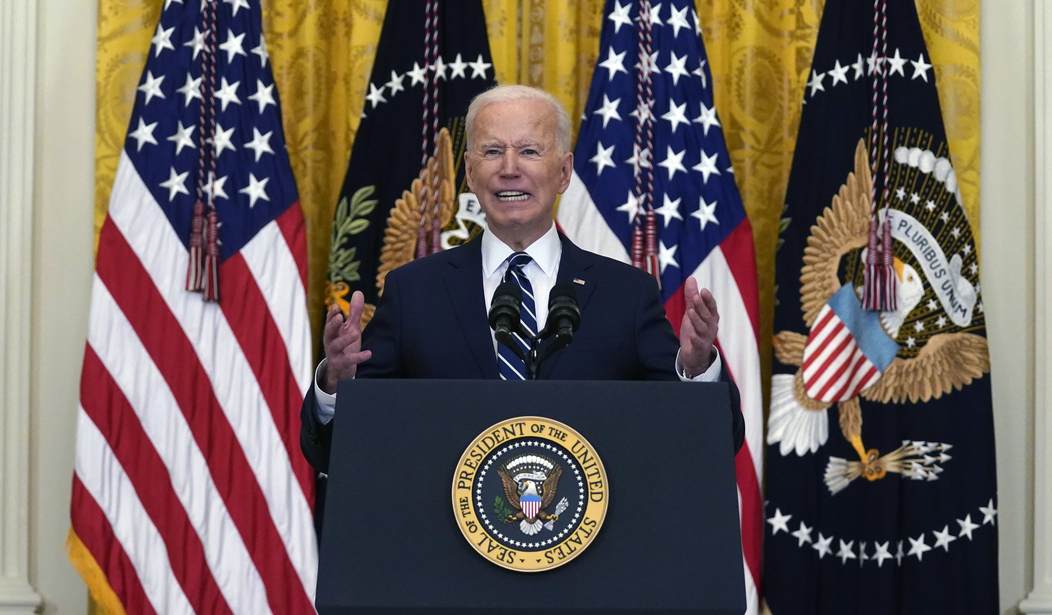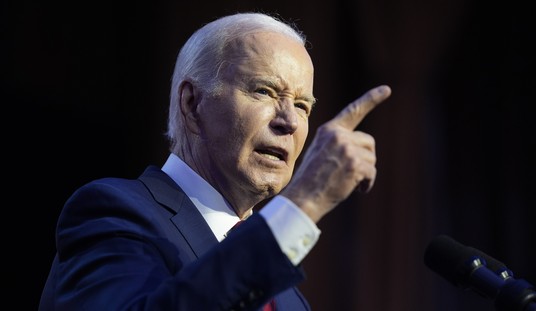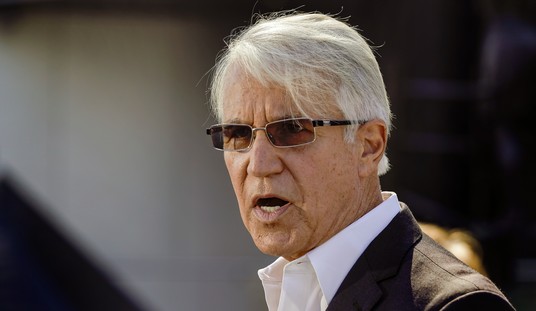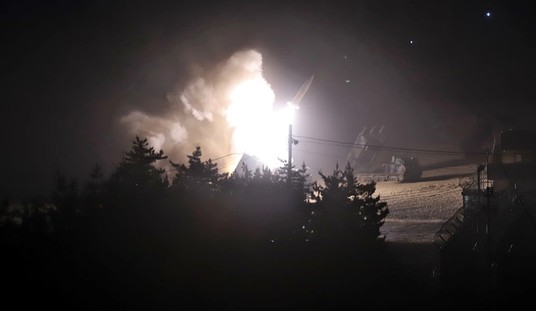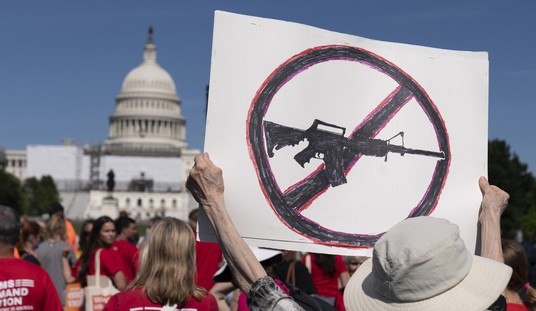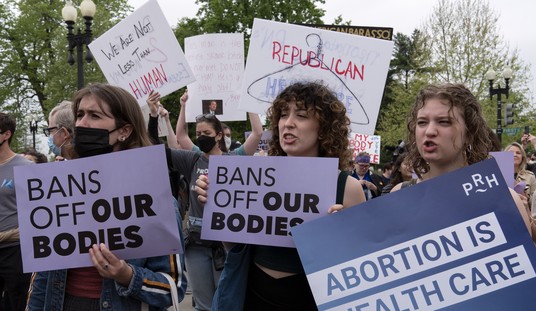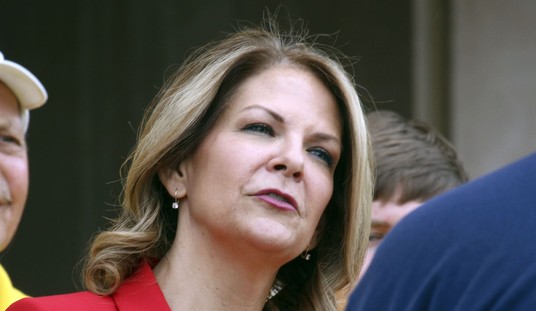Barely four percent of the way into his first presidential term, Joe Biden has decided he’ll have a second term. See if that sticky note stays up on your fridge door.
Donald Trump had similar plans for a second 1,461-day White House residency. In fact. Trump filed second-election paperwork on Inauguration Day of his first term. As most of us have since noticed, it didn’t work out that way because — guess what? – it’s not up to a president whether he gets a callback.
Eventually, all presidents talk about second terms, if only to avoid the early onset of lame-duckness. Most presidents who try do get second election wins; only Jimmy Carter, Herbert Hoover, and George H.W. Bush failed in the last century. Shows you how transitory those heady approval ratings can be. Biden’s hovers now around 55 percent.
During his very first news conference last Thursday, Biden was asked if he intended to seek reelection. “No,” said the 78-year-old Biden, momentarily sparking Democrat pacemakers, “the answer is ‘yes.’”
In that flawed news conference appearance, Biden relied on several printed cheat sheets to help him—notes and photos of which reporter to call on, what their topic would be, statistics for likely replies. Even then, the 46th president once again wandered incoherently at times:
“So the best way to get something done, if you hold near and dear to you uh, um, like to be able to – anyway – I, we’re going to get a lot done.”
He also recalled being in the Senate 120 years ago but was unable to recall the correct name of the Afghan president, a gaffe quietly fixed in the transcript by aides. If you were the Taliban negotiating the departure of U.S. troops after two decades, you would not likely take that as a sign of solid support for the elected Kabul government.
These days most of American politics as performed in Washington is, well, performance art. Recite your scripted lines on cue like a pro, as if you really mean them. But beyond the D.C. monuments, nothing there is etched in stone. No Beltway denizen expects anyone to stick to their vows beyond a politically-useful date TBD. They feel free to change directions as expediency suggests, more often even than Hollywood actors change spouses. See filibuster support in previous years.
Most Americans watch these soapbox orations from afar and shake their head. One of the most fascinating things to emerge from the 2016 election was that the only person to pick up on this disturbing disconnect between the Heartland and its national capital was a New York billionaire, a nonpolitician who lived in a high-rise penthouse but detected and tapped into that anger and frustration.
Trump made a series of election promises – crush ISIS, cut taxes, deregulate, rebuild the military, protect life, produce millions of jobs across all population sectors. Unlike most who trot off to Washington, Trump actually kept those vows, which helps explain the enduring epoxy loyalty of his political base that still puzzles isolated national media.
It did not pay off in reelection because though hard-working, Trump did little to expand his battalions of loyalists and often behaved in ways that were counterproductive to his own goals.
More than two-thirds of Biden supporters told pollsters they were not voting for Joe. They were voting against Trump. That’s a dangerous decision in a democracy because it allows the challenger to skate free of vital scrutiny on many important questions, such as his mental acuity and gargantuan spending plans.
You’ve gotta wonder now how those folks feel today about a commander-in-chief who doesn’t dispatch mean tweets but so often looks and acts lost as leader of our country and the free world. Who lets his unelected wife interrupt and complete his policy answer to a reporter. Who turns an unsatisfactory but stable border situation into chaos. Who stumbles up airplane steps. “What am I signing here?” Biden muttered at one recent event. “Who do I turn this over to?” he asked at another.
It is, of course, ludicrous for anyone to be making career plans today for 2024. Especially Joe Biden. He is the oldest man ever to be president. He’d be 81 at the end of Term No. 1 and 85 after Term No. 2. At 77 last fall, he was calling it a day at 9 a.m. Geritol is not going to do it.
Neither is his useless and chronic mask-wearing among staffers who are tested daily. After all the criticism of Trump and low-bar vaccination promises, Biden needs the appearance of controlling coronavirus. Not eradicating it. We’ve had flu vaccines for decades, and it still pops up every winter.
Biden also needs to get the economy humming again at least as well as Trump had it pre-pandemic. That might be a stretch for Joe. Obama put Biden in charge of implementing the trillion-dollar stimulus in 2010. Remember hundreds of thousands of “shovel-ready jobs” coming next month or certainly the month after? They didn’t arrive and shovel-ready became a sarcastic tagline.
Coming on the heels of his $1.9 trillion stimulus bill that was designed more to stimulate support among numerous Democrat constituencies, Biden now has a $3 trillion infrastructure plan. Where are all these trillions going to come from? Please, no one tell Biden what comes after trillion (quadrillion).
Truth is, Biden’s “infrastructure” plan has less to do with rusting bridges, which some Republicans actually might agree on. And more to do with progressive dreams of universal pre-K daycare and free college tuition and more.
Biden’s political fate will also be determined by his heath. He looked frail in the news conference. He is already seven years older than the average lifespan of a U.S. male born in 1942. He suffered two brain aneurysms in the 1980s.
Biden’s known daily schedule would not appear taxing. He spends most weekends away from Washington, walking to the helicopter always with someone by his elbow. A doctor is always near a president. But the road ahead is foggy; no one this old has ever been commander in chief.
Biden would be 81 in a 2024 reelection campaign and, if successful, 86 before he turned the Oval Office over to a successor. Democrats do tend to cling to aged leaders; Nancy Pelosi turned 81 on Saturday; her two senior aides are, indeed, very senior — Steny Hoyer turns 82 this summer, Jim Clyburn 81. Sen. Chuck Schumer is the youngster in Dem congressional leadership. He’s 70.
Kamala Harris is 56. But her lack of experience plus political protocol for a vice president requires her to wait patiently in the masked shadows for a Biden nod or demise. Will she – indeed, will other younger Dems – be able to control their impatience and ambitions in a growing executive power vacuum?
Then, of course, in 19 months there are midterm elections, historically a treacherous time for a president’s party. Democrats were shellacked in Obama’s first midterm, losing 63 House members and hundreds of state legislators, crippling Democrats’ political farm teams. They have yet to fully recover.
Biden could lose control of the House, perhaps even the Senate, stalling any Biden agenda. Now, you understand why they’re in such a hurry to pass another immense spending program.
Last week an unsigned White House directive went out to federal departments instructing them henceforth to refer to the Biden-Harris Administration, an obvious positioning ploy should an enfeebled Biden choose or be forced to cede power, as many expect in the next year or so.
Meanwhile, there’s plenty of time and opportunity for political stumbles over Iran, Syria, Russia, North Korea, China, and a host of foreign policy challenges. The other day top Chinese diplomats reportedly confronted Biden officials in an abortive meeting to open a friendly dialogue.
Aside from the Vietnam War in 1968, Americans don’t normally make presidential decisions over foreign policy issues. But modern presidents have chosen to project images of energy, power, and vigor, not the flaccid, masked face of this complacent crowd.

